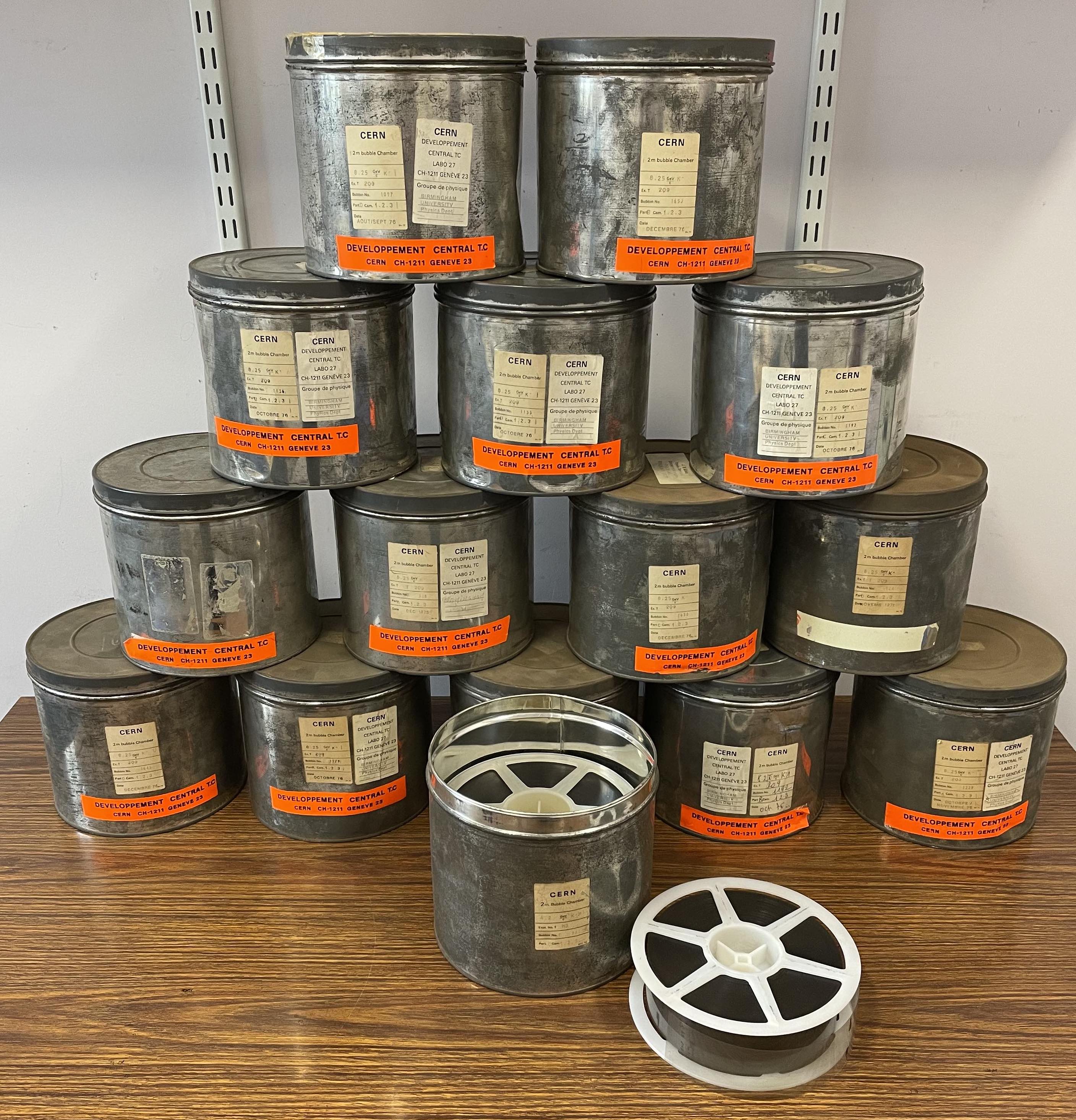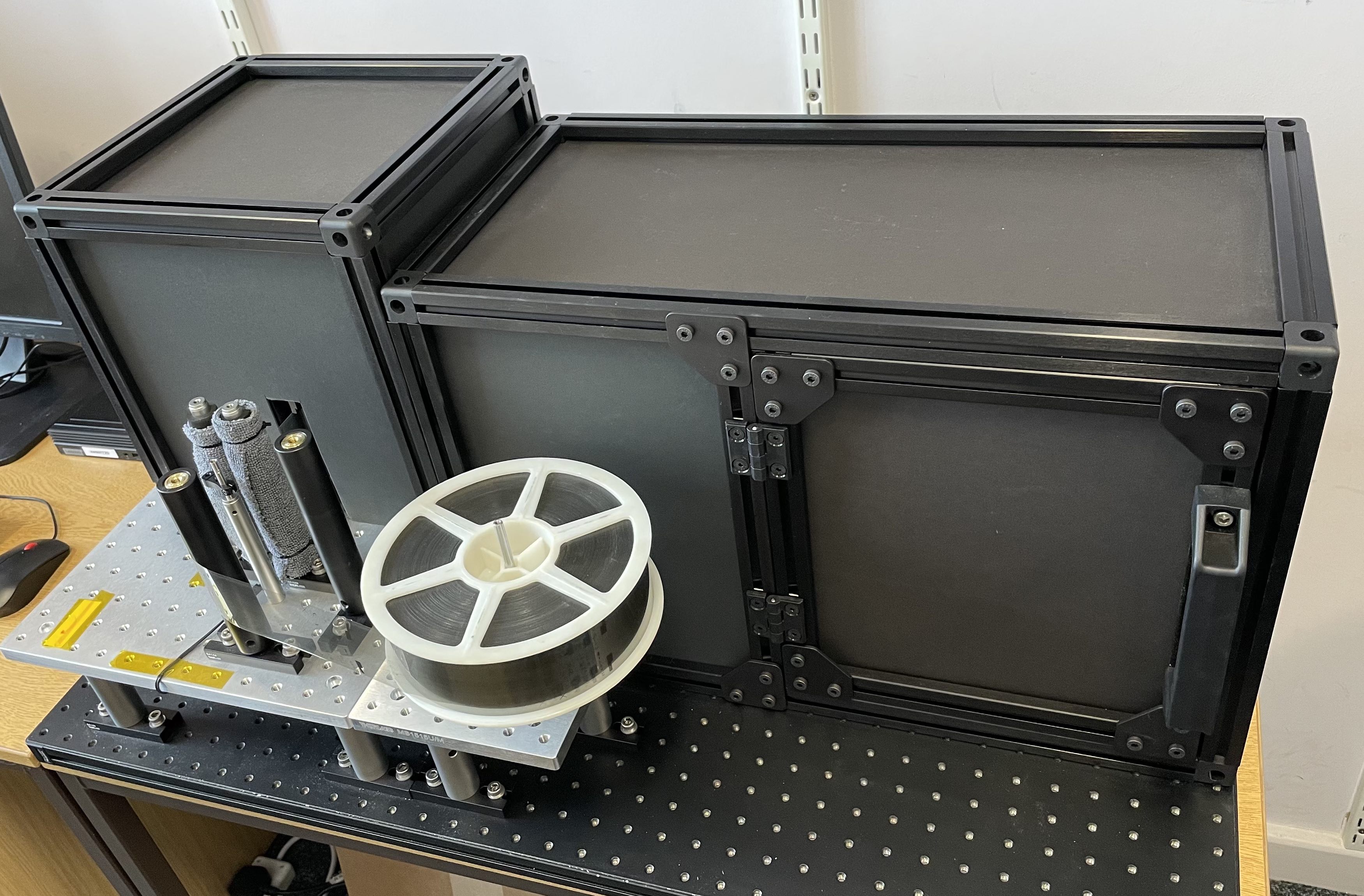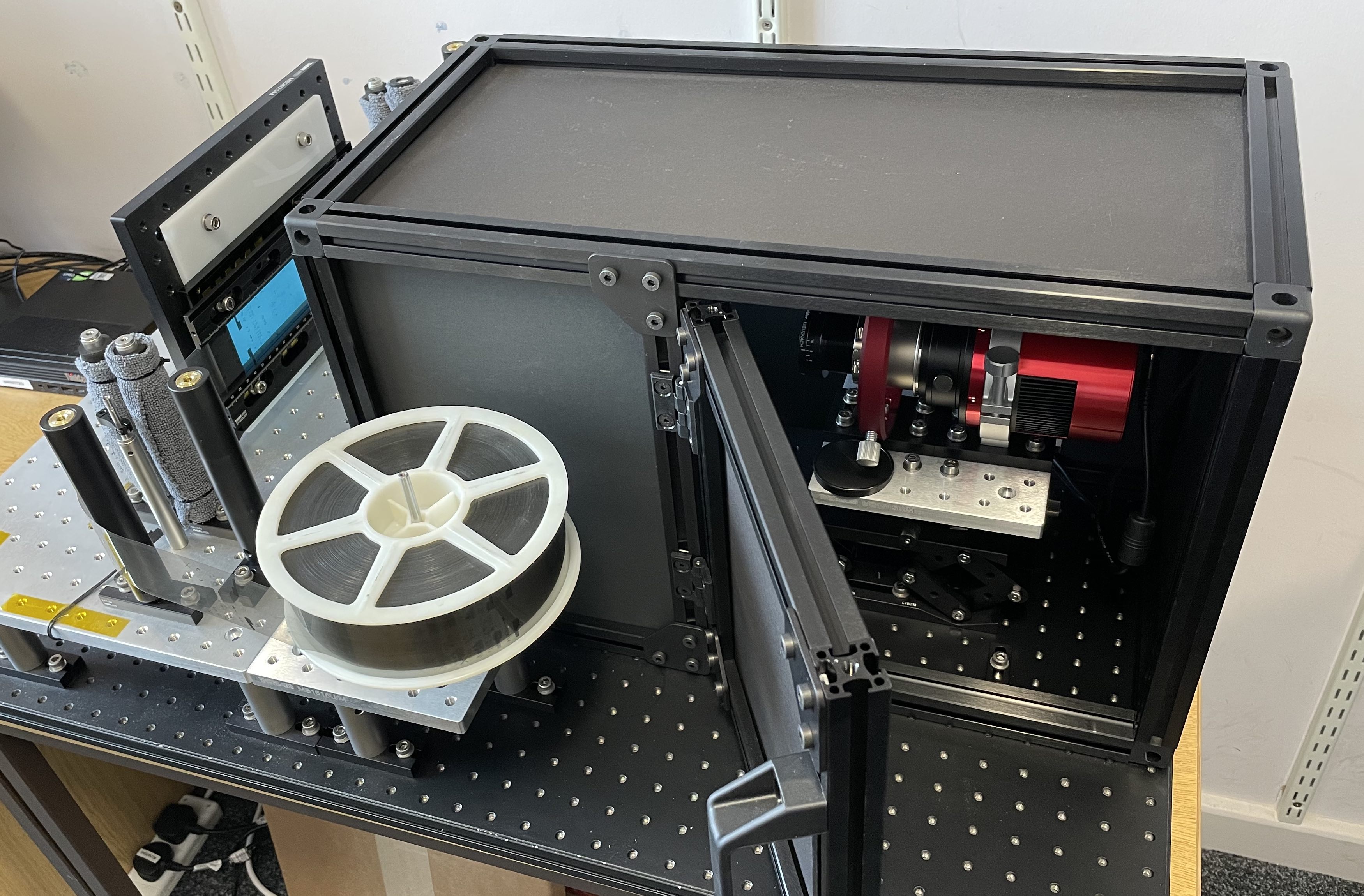Inspiration - The particle physics group of the University of Birmingham have a rich history of involvement in bubble chamber experiments dating back to the 1950s. As part of this legacy, the group hold an extensive collection of photographic film recorded by various bubble chamber experiments. These photographic records of particle interactions in the chamber represented the primary raw data format of such experiments, from which particle trajectories and momenta were then reconstructed from careful measurements of the film and many scientific insights were subsequently drawn. The realisation of the scientific and historical significance of this unique, yet fragile and almost forgotten resource, served as the inspiration to investigate the digital preservation of the photographic film collection.
Goal - The initial aim of the project is to digitse the entire collection of film from experiments conducted at the CERN 2m bubble chamber. This part of the collection is particularly special, since it is predominantly comprised of thousands of images from a single experiment, T209, with all three camera views of each beam exposure present, opening the possibility of renewed scientific investigation of the data (see the Image Reconstruction section). The collection also includes a variety of film from other chambers, including the CERN Big European Bubble Chamber (BEBC), though typically only a single camera view is present. Digitisation of BEBC film is also planned, though at a lower priority.


Method - Early investigations were made into digitising the photographic film collection with a commercial flatbed scanner, designed specifically for use with photographic prints and film negatives. It was quickly realised that while such solutions provide high quality results, the process is prohibitively time consuming (up to two minutes per frame) and labour intensive given the ambition of digitising thousands of images. With funding awarded by the Royal Society and STFC research council, a dedicated digitisation system was built which facilitated the automatic digitisation of an entire film reel (around 800 images for the common 50 mm × 170 mm film format) in just under three hours, while retaining the high resolution and image fidelity achieved with commercial scanner approach.


Digitisation System - The film digitisation system has been designed to record digital images of each film frame with the fidelity and resolution necessary to retain the possibilty of reconstructing the particle interactions encoded in the film (see the Image Reconstruction section). In particular, the main requirements in this regard were to ensure that minimal optical distortions are introduced and the particle tracks on the film are digitally sampled by multiple pixels, in order for their position on the film to be measured precisley. Furthermore, the system had to be fast (on the scale of seconds per frame) and operate in an entirely automatic manner, to facilitate the digitisation of thousands of film frames on a practical timescale. The system is composed of three main components, a digital camera, film illumination system and a film feed system, which are all controlled by a computer.
Digital Camera - The system uses camera intended for astronomical imaging (ZWO 6200MM), based around a 62 MP "full frame" format monochrome sensor with 16-bit colour depth (Sony IMX455). The camera is coupled to a high quality, low distortion lens designed for machine vision applications, manufactered by Schneider-Kreuznach. The lens ("Emerald" model) has a short minimum working distance, focal length of 80 mm and is operated at f/8. The objective element of the lens is placed approximately 350 mm from the film plane, leading to digital images in which one pixel corresponds to around 17 μm on the film. Minimum ionising tracks on 2m bubble chamber film typically exhibit an image intensity profile with a full width at half maximum of approximately 25 μm. As such, track images are typically sampled by three pixels in the direction perpendicular to propagation, allowing the trajectory centroid to be precisely determined.
Film Illumination - The film is illuminated from behind by a 20 cm × 15 cm electroluminescent panel which provides highly uniform illumination across the full area of a single film frame. The film itself represents a negative image of the largely dark chamber, with dark areas on the film corresponding to light rays entering the camera having been scattered from one of the flash light cones by a bubble or fiducial mark etched on the chamber windows. When in operation, all optical components of the digitisaion system are surrounded by a dark enclosure to avoid ambient light from causing reflection patterns and light gradients on the digital images.
Film Feed - The film is fed from the bobbin, guided by a number of rollers, through the illumination region, to a second bobin which is mounted upon a motorised rotational stage. In front of the illuminated region, the film is kept flat by the combination of two narrow (0.3 mm wide) metal guides and a pair of stiff rollers, covered in soft micro-fibre fabric, which keep the film sufficiently tought. Rotation of the stage leads to the advance of the film feed. The movement of the stage is controlled a purpose-written computer program which analyses the digital camera's view in real time. The program identifies common features (e.g. alignment crosses) on the film and advances the feed by the necessary distance to align the next frame with the nominal view of the camera, after which an image is captured in full resolution for permenant storage. In this way, following inital film loading and setup, the computer program facilitates the fully automatic digitisation of a full film reel without manual intervention.